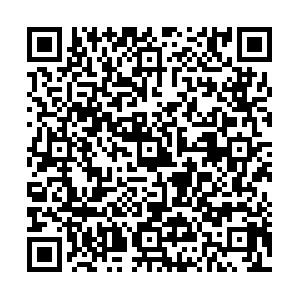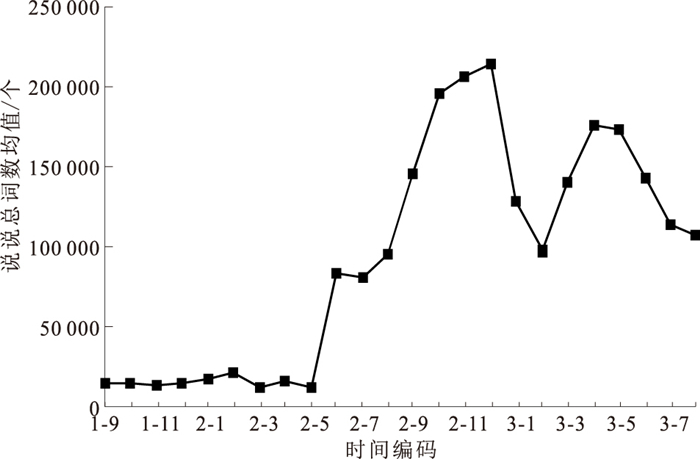Adolescent emotion during the transition stage from high school to college based on social network platform
-
摘要:
目的 分析大学生在社交网络平台上的文本信息,了解其在高中到大学过渡阶段时情绪状态及变化轨迹,为开展青少年心理健康教育提供参考。 方法 于2018年9—11月及2019年9—10月,通过线上和线下方式招募南昌大学534名本科生,提取其高三到大一时间区间内发布的QQ说说,以“月”为时间颗粒度进行标记。使用结巴分词程序和情绪词典,计算每月说说总词数、条数、积极情绪和消极情绪词平均词频。描述高中到大学阶段QQ说说的基本活跃度,使用多层线性模型分析消极情绪和积极情绪词词频的月变化趋势,进一步对高中和大学两阶段的基本活跃度和月变化趋势进行比较。 结果 青少年在进入大一后,对社交平台的使用度较高,说说总词数、条数、积极情绪、消极情绪词数均高于高三阶段(Wilcoxon Z值分别为-18.93,-18.03,-18.40,-13.60,P值均<0.01);大一阶段,女生发表说说的说说总词数、条数、积极情绪、消极情绪词数均高于男生(Mann-Whitney U值分别为26 499.00,28 581.00,24 636.00,28 010.50,P值均<0.05)。青少年说说积极情绪词比消极情绪词更多,积极情绪词的月平均词频(0.029)是消极情绪词(0.012)的2.40倍;在高三阶段的积极情绪词频、消极情绪词频会随着月份发生显著降低(β值分别为-6.01,-3.55;t值分别为-3.40,-2.86,P值均<0.01)。 结论 青少年在高三阶段使用QQ说说的活跃度较低,但其说说中体现出的积极情绪、消极情绪波动均更为剧烈,高三阶段学生的情绪状态值得关注。 Abstract:Objective To understand the emotion state and emotion trajectory of adolescents during the transition stage from high school to college by analyzing text on social network platform, and to provide reference for carring out mental education for adolescents. Methods From September to November 2018 and September to October 2019, 534 undergraduates were recruited through online and offline advertisement, and their Tencent Tweets posted during the period from last year of high school to first year of college were crawled and stored with the time stamps. Total number of words, the number of Tencent Tweets, frequency of positive emotion words and negative emotion words were obtained by using jieba (a word segmentation program) and an emotion dictionary. The degree of activity in Tencent Tweets during the transition stage were described. The trend of the frequency of negative and positive emotion words were analyzed by using hierarchical linear model. The degree of activity and trend of monthly variation between high school and colleges were also compared. Results After entering college, adolescents' degree of activity in Tencent Tweets were much higher. Total number of words, number of Tencent Tweets, number of positive emotion words and negative emotion words were significantly higher than those in high school (Wilcoxon Z=-18.93, -18.03, -18.40, -13.60, P < 0.01). Total number of words, number of Tencent Tweets, number of positive emotion words and negative emotion words posted by female adolescents were significantly higher than male adolescents during first year of college (Mann-Whitney U=26 499.00, 28 581.00, 24 636.00, 28 010.50, P < 0.05). There were more positive emotion words than negative emotion words in adolescents' Tencent Tweets, the monthly average frequency of positive emotion words (0.029) was 2.40 times of frequency of negative emotion words (0.012). The frequency of positive emotion words and negative emotion words decreased significantly with each month in the last year of high school (β=-6.01, 3.55; t=-3.40, -2.86, P < 0.01). Conclusion Adolescents were less active in using Tencent Tweets in last year of high school, but their positive and negative emotional fluctuation were more intense in Tencent Tweets. It is noteworthy to pay attention to the emotional state of adolescents in last year of high school. -
Key words:
- Mental health /
- Communication /
- Emotions /
- Adolescent
1) 利益冲突声明 所有作者声明无利益冲突。 -
表 1 不同年级和性别青少年QQ说说活跃度的比较(秩平均值)
Table 1. Comparison of Tencent Tweets between high school and college and genders
年级 统计值 性别 人数 总词数 说说条数 积极情绪词数 消极情绪词数 高三 男 189 256.54 264.61 251.24 260.27 女 345 273.50 269.08 276.41 271.46 U值# 30 532.00 32 056.00 29 530.00 31 235.00 大一 男 189 235.21 246.22 225.35 243.20 女 345 285.19 279.16 290.59 280.81 U值# 26 499.00** 28 581.00* 24 636.00** 28 010.50** 注:#为Mann-Whitney U值;*P<0.05,**P<0.01。 -
[1] ROGERS A A, UPDEGRAFF K A, IIDA M, et al. Trajectories of positive and negative affect across the transition to college: the role of daily interactions with parents and friends[J]. Dev Psychol, 2018, 54(11): 2181. doi: 10.1037/dev0000598 [2] ARNETT J J. Emerging adulthood: a theory of development from the late tens through the twenties[J]. Am Psychol, 2000, 55(5): 469-480. doi: 10.1037/0003-066X.55.5.469 [3] GUTMAN L M, ECCLES J S. Stage-environment fit during adolescence: trajectories of family relations and adolescent outcomes[J]. Dev Psychol, 2007, 43(2): 522-537. doi: 10.1037/0012-1649.43.2.522 [4] BEWICK B, KOUTSOPOULOU G, MILES J, et al. Changes in undergraduate students' psychological well-being as they progress through university[J]. Stud High Educ, 2010, 35(6): 633-645. doi: 10.1080/03075070903216643 [5] CONLEY C S, KIRSCH A C, DICKSON D A, et al. Negotiating the transition to college: developmental trajectories and gender differences in psychological functioning, cognitive-affective strategies, and social well-being[J]. Emerg Adulthood, 2014, 2(3): 195-210. doi: 10.1177/2167696814521808 [6] LAROSE S, BOIVIN M. Attachment to parents, social support expectations, and socioemotional adjustment during the high school-college transition[J]. J Res Adolesc, 1998, 8(1): 1-27. doi: 10.1207/s15327795jra0801_1 [7] DOANE L D, GRESS-SMITH J L, BREITENSTEIN R S. Multi-method assessments of sleep over the transition to college and the associations with depression and anxiety symptoms[J]. J Youth Adolesc, 2015, 44(2): 389-404. doi: 10.1007/s10964-014-0150-7 [8] BIRNBAUM M H. Human research and data collection via the Internet[J]. Annu Rev Psychol, 2004, 55: 803-832. doi: 10.1146/annurev.psych.55.090902.141601 [9] 张琰, 吴宜. 基于大数据的大学生网络社交行为研究[J]. 电子技术与软件工程, 2014(23): 30-31. https://www.cnki.com.cn/Article/CJFDTOTAL-DZRU201423026.htmZHANG Y, WU Y. College students' online social behavior based on big data[J]. Electron Technol Softw Eng, 2014(23): 30-31. (in Chinese) https://www.cnki.com.cn/Article/CJFDTOTAL-DZRU201423026.htm [10] BACK M D, STOPFER J M, VAZIRE S, et al. Facebook profiles reflect actual personality, not self-idealization[J]. J Gerontol, 2010, 21(3): 372-374. [11] 朱廷劭. 大数据时代的心理学研究及应用[M]. 北京: 科学出版社, 2016.ZHU T S. Psychological research and application in the era of big data[M]. Beijing: Science Press, 2016. (in Chinese) [12] 孙茂松, 陈新雄. 借重于人工知识库的词和义项的向量表示: 以HowNet为例[J]. 中文信息学报, 2016, 30(6): 1-6, 14. https://www.cnki.com.cn/Article/CJFDTOTAL-MESS201606001.htmSUN M S, CHEN X X. Embedding for words and word senses based on human annotated knowledge base: a case study on HowNet[J]. J Chin Inf Process, 2016, 30(6): 1-6, 14. (in Chinese) https://www.cnki.com.cn/Article/CJFDTOTAL-MESS201606001.htm [13] LIU R X, LIU H. The daily rhythmic changes of undergraduate students' emotions: an analysis based on tencent tweets[J]. Front Psychol, 2022, 13: 639. [14] GOLDER S A, MACY M W. Diurnal and seasonal mood vary with work, sleep, and daylength across diverse cultures[J]. Science, 2011, 333(6051): 1878-1881. doi: 10.1126/science.1202775 [15] 汪静莹, 甘硕秋, 赵楠, 等. 基于微博用户的情绪变化分析[J]. 中国科学院大学学报, 2016, 33(6): 815-824. https://www.cnki.com.cn/Article/CJFDTOTAL-ZKYB201606012.htmWANG J Y, GAN S Q, ZHAO N, et al. Chinese mood variation analysis based on Sina Weibo[J]. J Univ Chin Acad Sci, 2016, 33(6): 815-824. (in Chinese) https://www.cnki.com.cn/Article/CJFDTOTAL-ZKYB201606012.htm [16] 张秀丽, 李招淡. 以QQ为平台加强大学生思想政治教育的探索与实践[J]. 思想教育研究, 2009(5): 88-91. doi: 10.3969/j.issn.1002-5707.2009.05.024ZHANG X L, LI Z D. Taking QQ as a platform to strengthen the exploration and practice of ideological and political education for college students[J]. Stud Ideol Educ, 2009(5): 88-91. (in Chinese) doi: 10.3969/j.issn.1002-5707.2009.05.024 [17] ZHAO N, JIAO D, BAI S, et al. Evaluating the validity of simplified chinese version of liwc in detecting psychological expressions in short texts on social network services[J]. PLoS One, 2016, 11(6): 1-15. [18] DODDS P S, CLARK E M, DESU S, et al. Human language reveals a universal positivity bias[J]. Proc Natl Acad Sci, 2015, 112(8): 2389-2394. doi: 10.1073/pnas.1411678112 [19] 辛文娟, 赖涵, 陈晓丽. 大学生社交网络中印象管理的动机和策略: 以微信朋友圈为例[J]. 情报杂志, 2016, 35(3): 190-194. https://www.cnki.com.cn/Article/CJFDTOTAL-QBZZ201603034.htmXIN W J, LAI H, CHEN X L. Motivation and strategy of college students image management in social networks: using WeChat circle of friends as an example[J]. J Intell, 2016, 35(3): 190-194. (in Chinese) https://www.cnki.com.cn/Article/CJFDTOTAL-QBZZ201603034.htm [20] 刘慧娟, 张璟. 高中生不良情绪状态的特点研究[J]. 心理发展与教育, 2002, 18(2): 60-63. https://www.cnki.com.cn/Article/CJFDTOTAL-XLFZ200202011.htmLIU H J, ZHANG J. Characteristics of ill-emotion in high school students[J]. Psychol Dev Educ, 2002, 18(2): 60-63. (in Chinese) https://www.cnki.com.cn/Article/CJFDTOTAL-XLFZ200202011.htm -







 下载:
下载:




